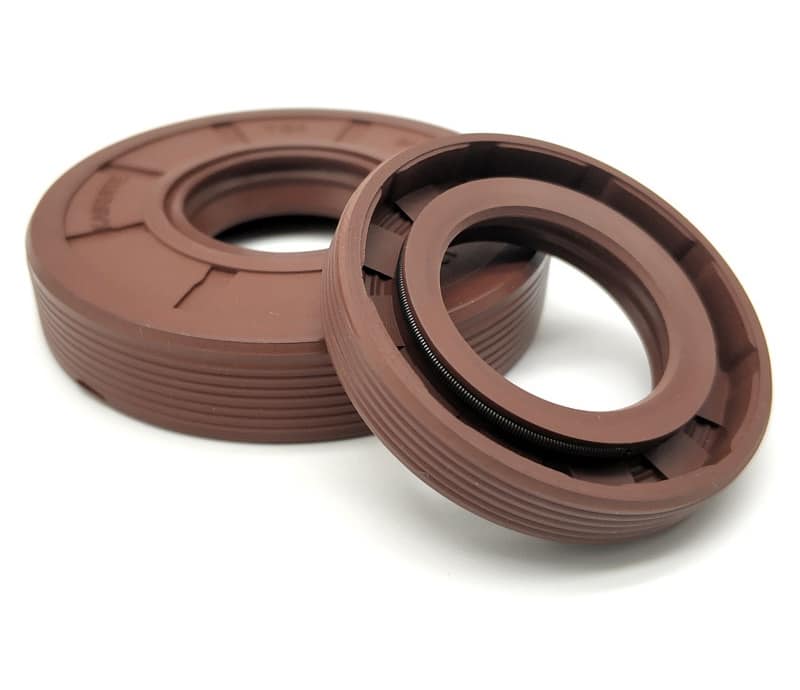Need a reliable oil seal for rotating shafts? The TC oil seal is your best bet for keeping oil in and dirt out.
It features a durable steel case and dual-lip structure—delivering high sealing performance in motors, pumps, and gearboxes.

Let’s explore how TC oil seals are built, why they outperform others, and which material to choose for your conditions.
What is a TC oil seal and how does it work?
It’s a rotary shaft seal with a double lip and steel shell for oil retention and dust exclusion.
TC oil seals use a primary lip to seal lubricant and a dust lip to block external particles. The spring-loaded design ensures pressure on the shaft for consistent sealing.
| Component | Function |
|---|---|
| Metal Shell | Ensures a tight press-fit |
| NBR / FKM Lip | Seals oil and resists chemicals |
| Dust Lip | Prevents dirt, mud, and debris ingress |
| Spring | Maintains radial sealing pressure |
We offer TC oil seals in NBR for general machinery and FKM for chemically intensive or high-heat conditions.
What’s the difference between TC and TG4 oil seals?
While both have dual-lip sealing, TG4 seals add extra rubber reinforcement for more rugged environments.
| Feature | TC Oil Seal | TG4 Oil Seal |
|---|---|---|
| Structure | Metal shell, exposed | Rubber-covered steel body |
| Material | NBR / FKM | NBR / FKM |
| Use Case | Motors, pumps, axles | Harsh environments, muddy or dusty sites |
For off-road or heavily contaminated systems, I often recommend a TG4 oil seal with better external durability. You can also review structural options in our skeleton oil seal guide.

Where are TC oil seals commonly used?
These seals are used in moderate-speed rotating systems needing both oil retention and dust defense:
- Gearboxes and electric motors
- Hydraulic pumps and couplings
- Agricultural drives and axles
- Automotive transmissions
In situations where both sealing performance and contamination protection are critical, I always prefer TC-type designs.
What materials are available for TC oil seals?
We manufacture in two elastomers based on your use case:
- NBR: Great for general oils, water, fuel (–40°C to +120°C)
- FKM (Viton®): Best for chemical, fuel, and heat resistance (up to 200°C)
For side-by-side performance insights, see our comparison: FKM vs NBR oil seals.
Are TC oil seals interchangeable between brands?
Yes. TC oil seals are ISO/DIN standardized and easy to match across brands like NOK, SKF, or National.
To simplify sourcing, we built a complete oil seal cross reference chart—or just send us your part number for matching.
Conclusion
TC oil seals combine cost-effectiveness, reliable sealing, and dual-lip protection, making them a go-to for motors, pumps, and transmission systems across industries.
Get Custom Sizes or Samples
📩 Email:[email protected]
📞 WhatsApp:+86 17622979498
OEM and small MOQs available in NBR or FKM materials.
Related topic
TC Skeleton Oil Seal – Metal Shell with Dual Lip
FKM vs NBR Oil Seals – Which to Choose?
Oil Seal Cross Reference Chart – Find Your Match


